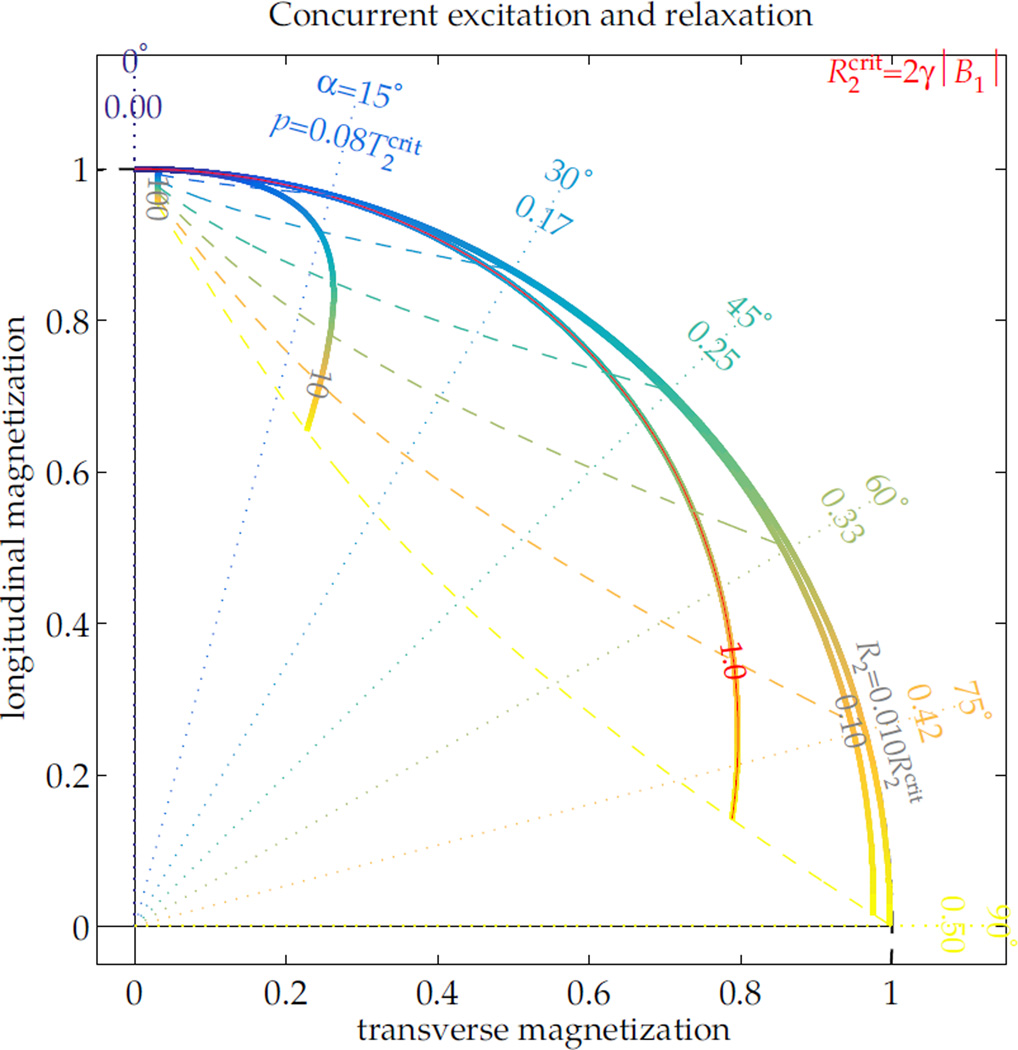Figure 3.
During RF excitation, if there is no R1 relaxation or off-resonance, the ratio of R2 to dictates the excitation dynamic. With a constant applied RF field B1 and no off-resonance, the excitation is specified by its pulse duration p or nominal excitation angle α = γB1p. Its effect upon magnetization varies over the range of relative R2 (thick lines). As the excitation proceeds to longer durations for higher tip angles (blue → yellow gradient), short-T2 magnetization ceases to increase its transverse component. For all tip angles, the final orientations of magnetization across the range of R2 (dashed lines tracing the range over R2) can differ greatly from the nominal excitation angle (dotted lines).

